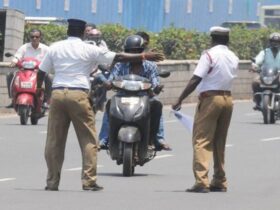There are basically 4 types of Negligence :-
- Contributory Negligence
- Comparative Negligence
- Vicarious Negligence
- Gross Negligence
But before jumping into detail of all types of negligence, let’s just first go through what negligence actually is.
Table of Contents
What is Negligence?
In layman’s language, Negligence is a failure by an individual in taking reasonable care. It can happen in any case where due care was not taken.
Car accident due to high speed? Case of Negligence.
Did a worker injure at work due to the poor quality of protection provided? Case of Negligence.
Did an accident take place due to potholes on roads? Case of negligence.
A doctor who operates on the wrong patient or on the wrong body part? Case of negligence.
A restaurant owner who mops the slippery floor and doesn’t put up a “Wet Floor” sign? Case of Negligence.
With so many instances of Negligence taking place in our lives, let us try to decipher what negligence actually is.
Types of Negligence
There are 4 types of Negligence recognized by law:-
- Comparative Negligence
- Contributory Negligence
- Vicarious Negligence
- Gross Negligence
Comparative Negligence

Comparative Negligence – Comparative negligence is the type of negligence where the court views and compares the faults of both parties. The plaintiff must have less than 51% fault to file a case against the defendant.
Remedy for comparative negligence
In comparative negligence, the plaintiff recovers damages on the premise of how much loss has occurred to him. The plaintiff can recover damages even if he or she is partially at fault which is unlike contributory negligence laws.
Court decides how much are both parties at fault. A percentage is assigned to each party keeping in mind their contribution to the incident. You can recover the amount of percentage you were not at fault for.
For example- Ramesh is going home from his office in a car and is not wearing his seat belt. Abdul is drunk and speeding towards him from the opposite way. Ramesh was not moving as he was waiting for the red signal but Abdul manages to hit him and injure him grievously.
Now assume, the court assigns 10% fault to Ramesh and 90% fault to Abdul. Then you can recover 90% of the damages caused to you in the accident.
You need to have less than 51% fault in an accident to be able to file a suit against the other party. In the case of multiple defendants, if the percentage of fault of the plaintiff should not be more than a single defendant.
For example- 5 people, Abdul, Ramesh, Joseph, Ali, and Ram were involved in an accident. The court decided that Abdul was 10% at fault, Ramesh was 20% at fault, Joseph was 15% at fault, Ali was 25% at fault, and Ram was 30% at fault.
Now, in this case, no one can sue except Abdul as everyone else has a higher percentage of fault than him.
Contributory Negligence

Contributory Negligence – Contributory negligence means that the plaintiff has also contributed to the injury caused to him. If the defendant is able to prove that there was some fault of the plaintiff as well, the case will fall under contributory negligence.
For example:- Abdul is going home from his office in a car and is not wearing his seat belt. Ramesh is drunk and speeding towards him from the opposite way. Abdul was not moving as he waiting for the red signal but Ramesh manages to hit him and injure him grievously.
Abdul files a suit against Ramesh but Ramesh says that Abdul contributed to his injury by not wearing his seat belt. So, this case will fall under the purview of Contributory negligence.
Remedy for contributory negligence
If it is proved that the plaintiff is also responsible for the injury caused to him, even 1%, he will get no compensation at all. In contributory, the law of “all or nothing” is followed. Either you get all or you get nothing.
Although this has changed in lieu of the comparative negligence laws.
Vicarious Negligence

Vicarious Negligence – Vicarious negligence is where the master is held liable for the actions of his agent. Vicarious liability applies in the tort of negligence as well. It means that if an agent, representing his master commits the tort of negligence, the master can be held liable for any act done by his agent. Now, this agent can be anyone. It can be his servant or employee or attorney etc.
For example:- Abdul is an employee of Ramesh who owns a car service center. Abdul shows negligence and damages a customer’s car while handling it. In this case, Ramesh will be held liable for the damages caused to the customer as Abdul is his employee and was representing Ramesh while servicing cars.
The logic behind this type of negligence is that customer comes on the pretense that Ramesh has a reputed service company and they will take good care of their car and not due to how skilled worker Abdul is. So, in a way any employee working in that car service company represents Ramesh.
Remedy for Vicarious Negligence
In Vicarious negligence, the damages caused to the plaintiff will not be compensated by the defendant but by his master. The compensation amount will be decided by the court by determining the fault percentage.
Gross Negligence

Gross Negligence – Gross negligence is the highest form of negligence tort anyone can commit. It is so serious type of negligence that a reasonable or prudent person would never commit the same wrongdoing. It is so reckless or wanton that it shows a complete lack of concern for the safety of others.
For example – Ramesh is a doctor at a hospital and Abdul comes to him to get his liver transplanted. But Ramesh just wanted to go home so, in hurry, he showed complete negligence and transplanted his kidney instead of his liver.
Now, this is the most grievous form of negligence that someone can show. Because of this, it has criminal repercussions as well. These types of negligence cases are taken very seriously.
Remedy for gross negligence
As this is the highest form of negligence. The punishment for committing this is also one of the harshest. In most gross negligence cases, criminal proceedings take place against the defendant. He will also be penalized very heavily for the harm done by him.
That was all for this blog. Do share your views in the comment section below.
Recent Post










Leave a Reply
View Comments